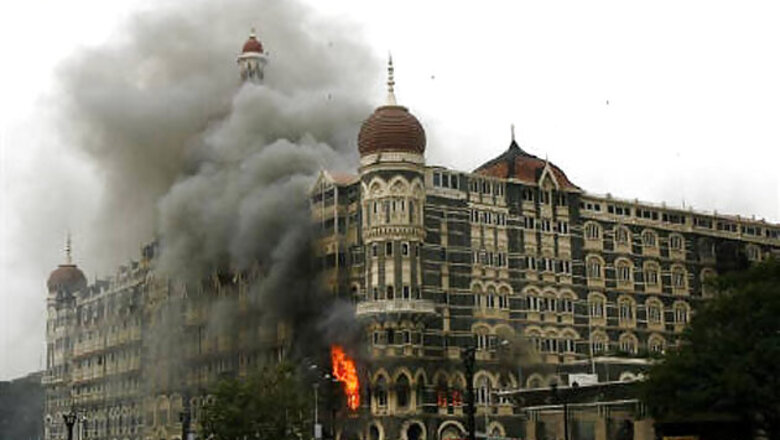
views
New Delhi: The Supreme Court has upheld acquittal of the 26/11 co-accused Fahim Harshad Mohammad Yusuf Ansari and Sabauddin Ahmed Shaikh. The two were accused of providing topographical details to the Mumbai attackers. The court observed that the evidence shows that conspiracy behind the 26/11 strike was hatched in Pakistan.
The Maharashtra government's had challenged the acquittal of the two. Ansari and Shaikh were acquitted by the Bombay High High Court due to inadequate evidence.
Special Public Prosecutor Ujjwal Nikam put up a brave face by saying that the two were let off because of insufficient evidence and it was not possible to collect proofs.
"No doubt prosecution could not establish the charge against Fahim and Sabauddin for want of sufficient evidence. There is a difference between no evidence and insufficient evidence. The evidence which was beyond the control to collect cannot be termed as defective investigation," Nikam said over phone.
A bench of justices Aftab Alam and CK Prasad, while dismissing 25-year-old Ajmal Kasab's plea against upholding of his death penalty, upheld the acquittal of Ansari and Ahmed, the two alleged Indian conspirators in the Mumbai attacks case.
Nikam, who helped in the investigations of the elite crime branch led by Rakesh Maria, at present in charge of Anti Terror Squad, was left in an embarrassing position by special court of ML Tahaliyani which had questioned probe conducted by the crime branch.
Prosecution had claimed that the same map was recovered from the pocket of Abu Ismail, a terrorist shot dead during an encounter that led to Kasab's arrest. The the defence was able to prove that the map that the prosecution claimed to have been recovered from the terrorist was in a very good condition, which would not have been possible if it had been in a folded condition for a long time.
The Bombay High Court, whose February 21 order was upheld by the Supreme Court, had concurred with the view taken by the sessions judge that the map recovered from Ismail's pocket should have some wrinkles on it and blood spots as the Lashker-e-Toiba (LeT) terrorist was badly injured in the gunfight.
The Bombay High Court had also refused to take cognizance of Kasab's confessional statement naming the two and said, "We have held that Kasab's confessional statement is true and voluntary and can be relied upon because, it is corroborated by other evidence. The question is whether part of the statement which relates to involvement of Ansari and Shaikh can be kept out of consideration," the High Court judgement had said."
"... It is open to the court to accept a part of the confessional statement which is corroborated by other evidence on record and exclude that part which is not corroborated. In view of this, we find no difficulty in excluding that part of the confessional statement which refers to the involvement of Ansari and Shaikh as there is no sufficient corroboration to that part," it had said.
The Supreme Court bench had also held, "Kasab's confessional statement was very much voluntary except a very small portion".
Late police Commissioner of Mumbai Police Hasan Gafoor and Maria had repeatedly claimed that Ansari and Shaikh had carried out reconnaissance of various targets attacked by Lashker terrorists on November 26, 2008.
The case against these two was considerably weakened by the reported confession in an American court by US terror accused David Headley that he had reconnoitred the targets for the Lashker attackers.
After Headley's confession of carrying out pre-attack reconnaissance for the Lashker assault on Mumbai, the investigators had been facing some embarrassing questions.
(With additional information from PTI)
















Comments
0 comment